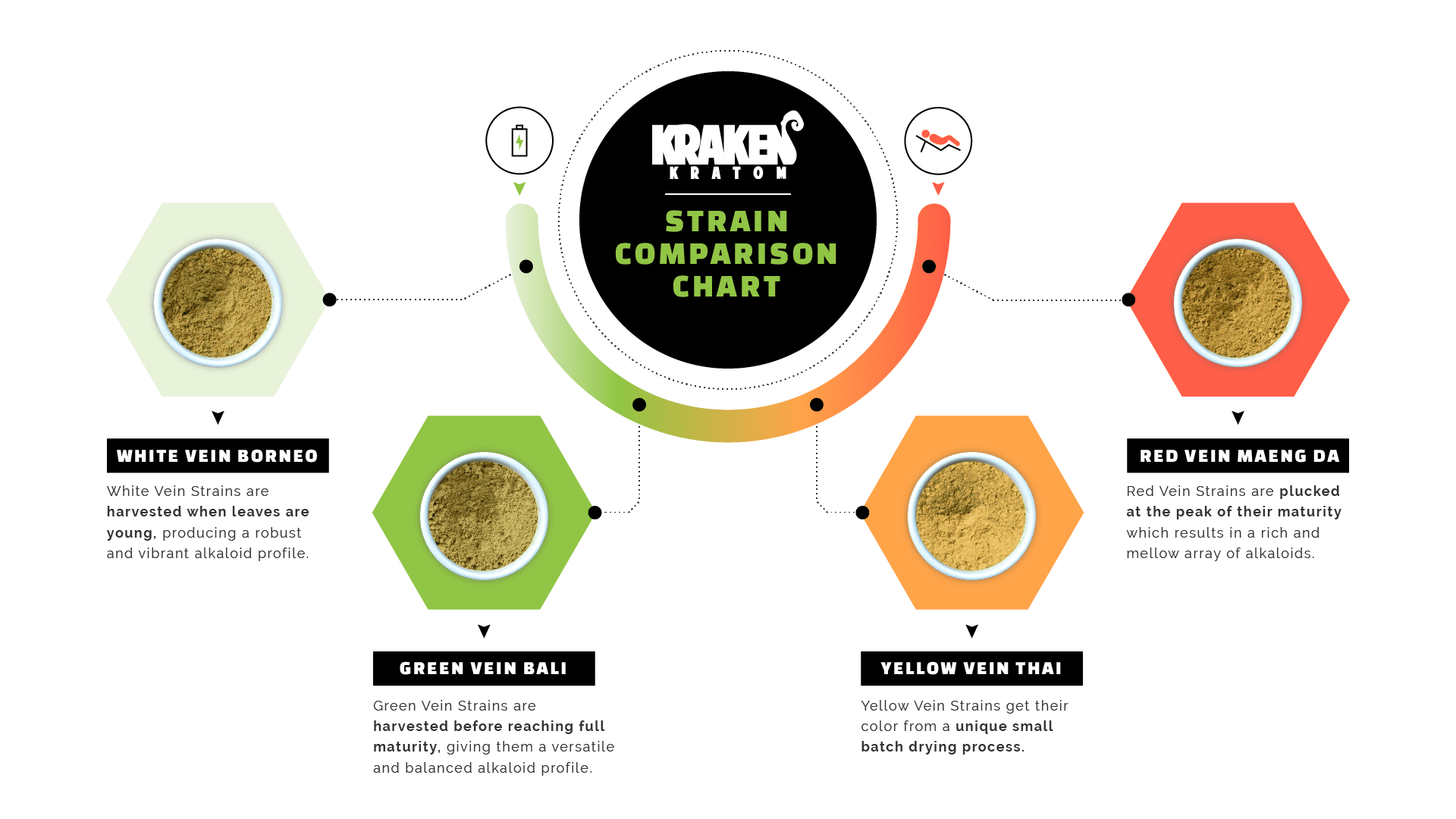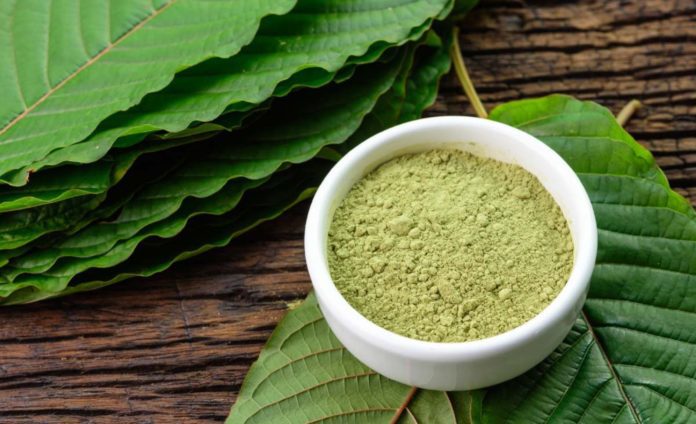If you’re new to the world of kratom, you may be wondering which strains you should try or the difference between each type. Kratom strains can be broken down into four color categories: white, green, red and yellow.
Each of these colors, or veins, have different effects and alkaloid profiles. Knowing these differences will help you make an informed decision the next time you shop at the best place to buy kratom online.
Kratom Veins Explained
If you take a close look at kratom leaves, you can see that the stem and veins have a distinct color. That color gives you an idea of its effects and the leaf’s chemical composition. Some colors are energizing, while others are relaxing. Understanding the properties of each type can help you find the right vein and strain for your needs.
White Vein Strains
Strains of white vein kratom are harvested early. At this stage, the leaves are still young and delicate – far from maturity. Once harvested, the leaves are dried indoors where they aren’t exposed to light. Because they are dried entirely indoors, the leaves are able to maintain their white color and potency.
White kratom can be mildly stimulating and uplifting. This vein gets its energizing properties from its high concentration of mitragynine. White vein kratom strains have lower levels of 7-hydroxymitragynine, which is known for its calming and pain-relieving properties. The higher levels of mitragynine make this vein more energizing than relaxing.
Many users find that white kratom strains are ideal for morning use because they can help you feel awake, alert and focused for the day.
While all white strains have energizing properties, some are more stimulating than others. The level of stimulation depends on the plant’s environmental conditions, such as soil composition and sunlight.
Because of its perceived higher potency, white kratom strains aren’t usually recommended to new users.
Green Vein Kratom
Strains of green vein kratom are harvested a little later than white vein strains. The leaves are still harvested early before they are fully mature, but they’ve developed enough to perform photosynthesis and respiration.
Green vein strains are first dried indoors before being moved outdoors until they are fully dried.
Because green kratom leaves are still young and immature, they have a stimulating effect, albeit subtler than white vein strains. Green vein kratom has a lower concentration of 7-hydroxymitragynine and a higher concentration of mitragynine.
Many users believe that green vein kratom strains are more balanced than any other type and use it to stay more focused and alert.
Red Veins
Strains of red vein kratom, unlike their white and green counterparts, are harvested when the leaves are fully mature. Because the leaves have a chance to reach full maturity, the alkaloid profile of red vein strains is very different from its white and green counterparts.
Red vein kratom is known for its relaxing properties, and it may also help reduce anxiety and depression. This is due to the fact that red vein strains have higher levels of 7-hydroxymitragynine. This alkaloid is the oxidized version of mitragynine, and it’s believed to have potent analgesic properties.
Yellow Strains
Strains of yellow vein kratom get their unique color from the way they are processed. Leaves go through a small-batch drying process. Leaves are carefully selected and usually green vein leaves that have mature alkaloid profiles.
To get the yellow color, the leaves are placed on drying racks and left out in direct sunlight to dry out over several days. As the leaves are exposed to sunlight, the chlorophyll starts to break down, and this is what creates the yellow color. Yellow vein strains can have a coppery or rich golden color, depending on when the leaves were picked and the drying process.
The lengthy process of creating yellow vein kratom is what makes it so rare and hard to come by.

Kratom Origins and Their Effects
Traditionally, kratom is categorized by leaf color, but its origin is also taken into consideration. Kratom is grown throughout Southeast Asia. Each region will have slightly different properties because the growing conditions vary from one place to another.
Although the origin is important, it only has a subtle effect on the results. The color is what really matters. The concept is similar to how tea is grown and categorized. All types of tea come from the same plant. It’s how the leaves are processed that really makes the difference.
The longer kratom leaves are left to mature and ferment, the more soothing the effects. The younger and less mature the leaves, the more potent and energizing the effects will be.
When choosing a Kratom strain, the vein color is important as it helps determine which alkaloids are most abundant.
There are two other terms that you may find when selecting strains, and it’s important to also understand their meanings:
- Horned: As the name suggests, these plants have “horned” leaves, and their natural shape is due to the grafting of hybrid kratom plants. In most cases, “horned” strains have higher acidic content.
- Maeng Da: A Thai term used to describe a hybrid kratom strain created by grafting several strains together.
Now that you understand the properties of different leaf colors, you can find a kratom strain that will help you achieve your goals.
